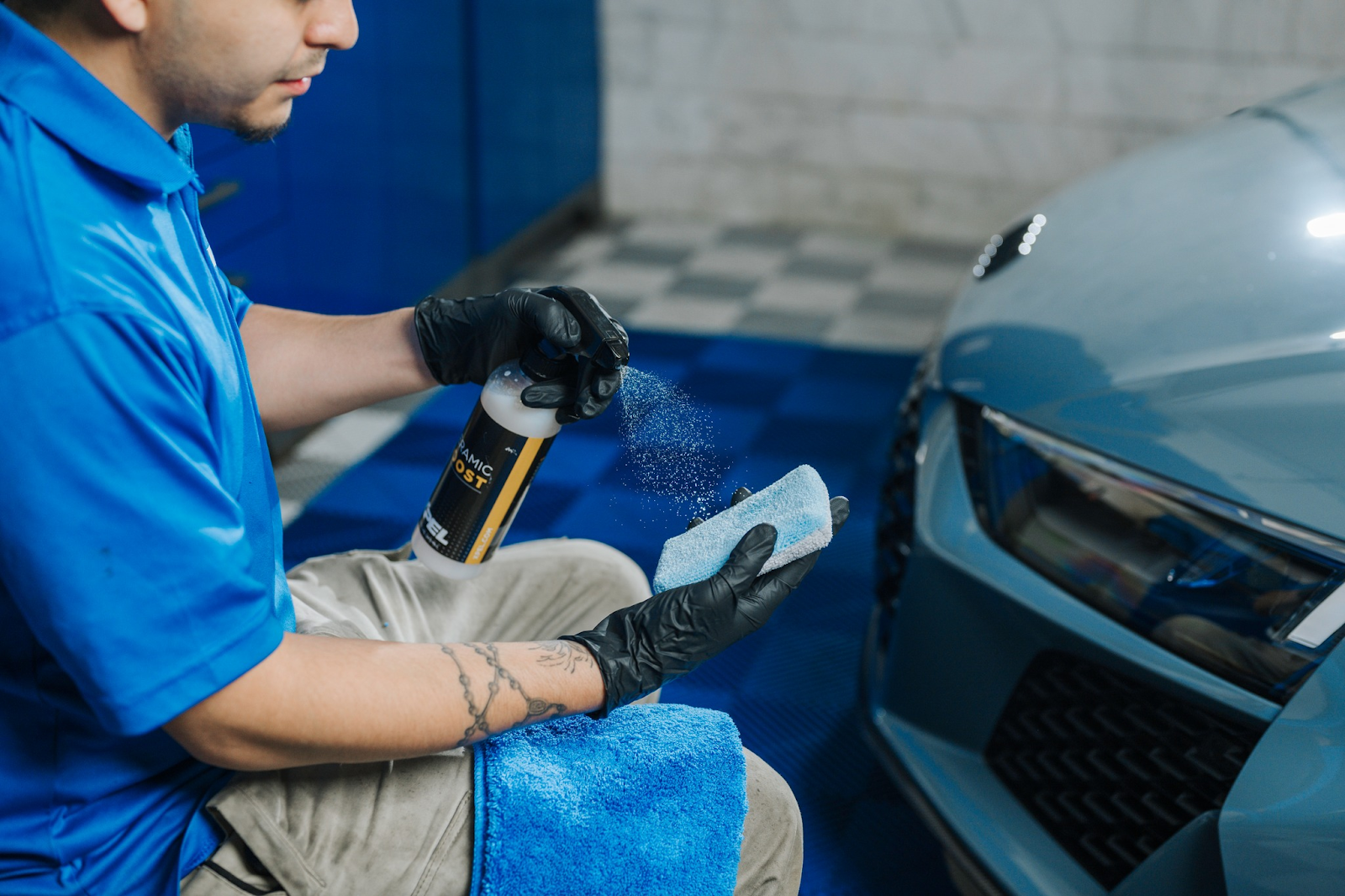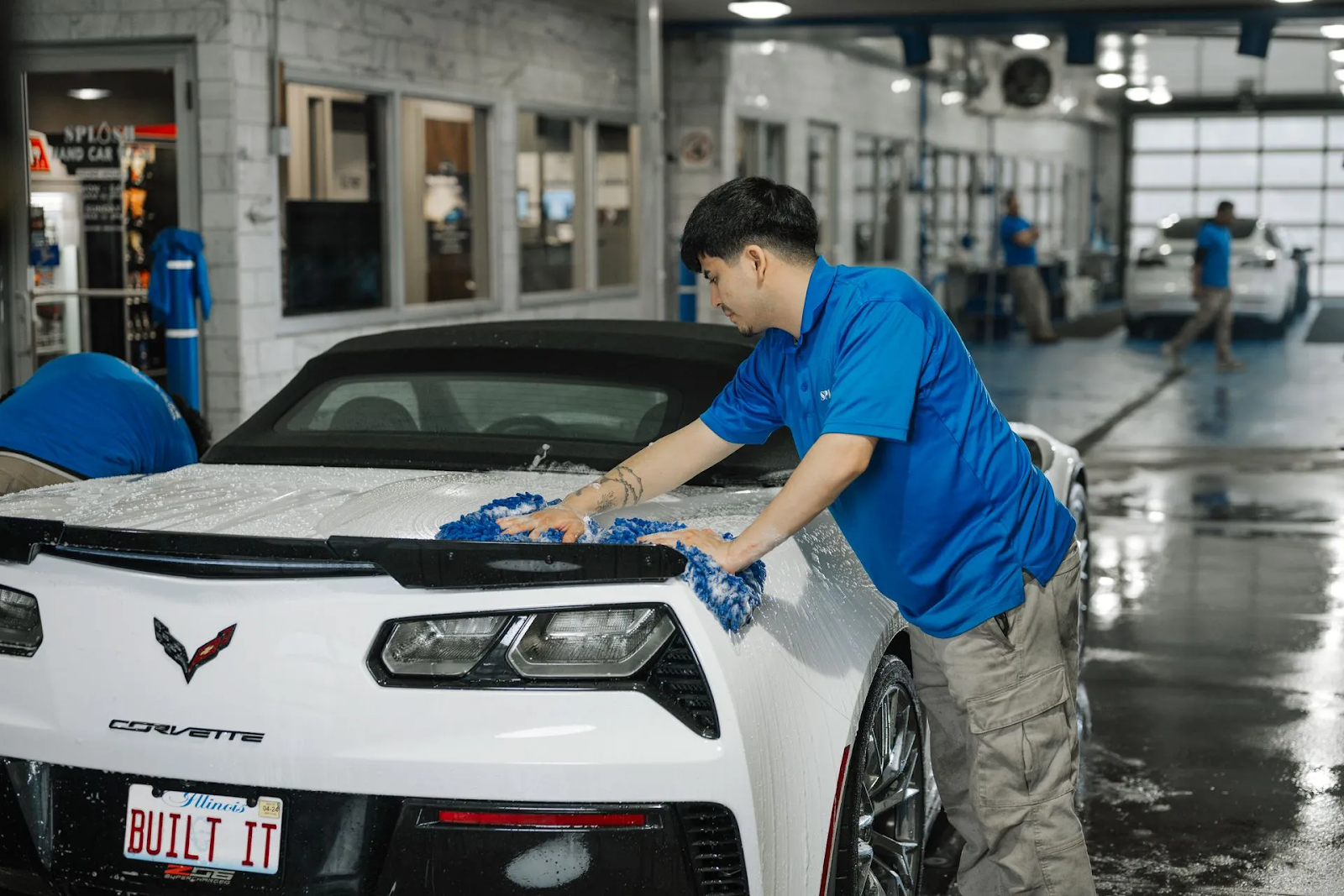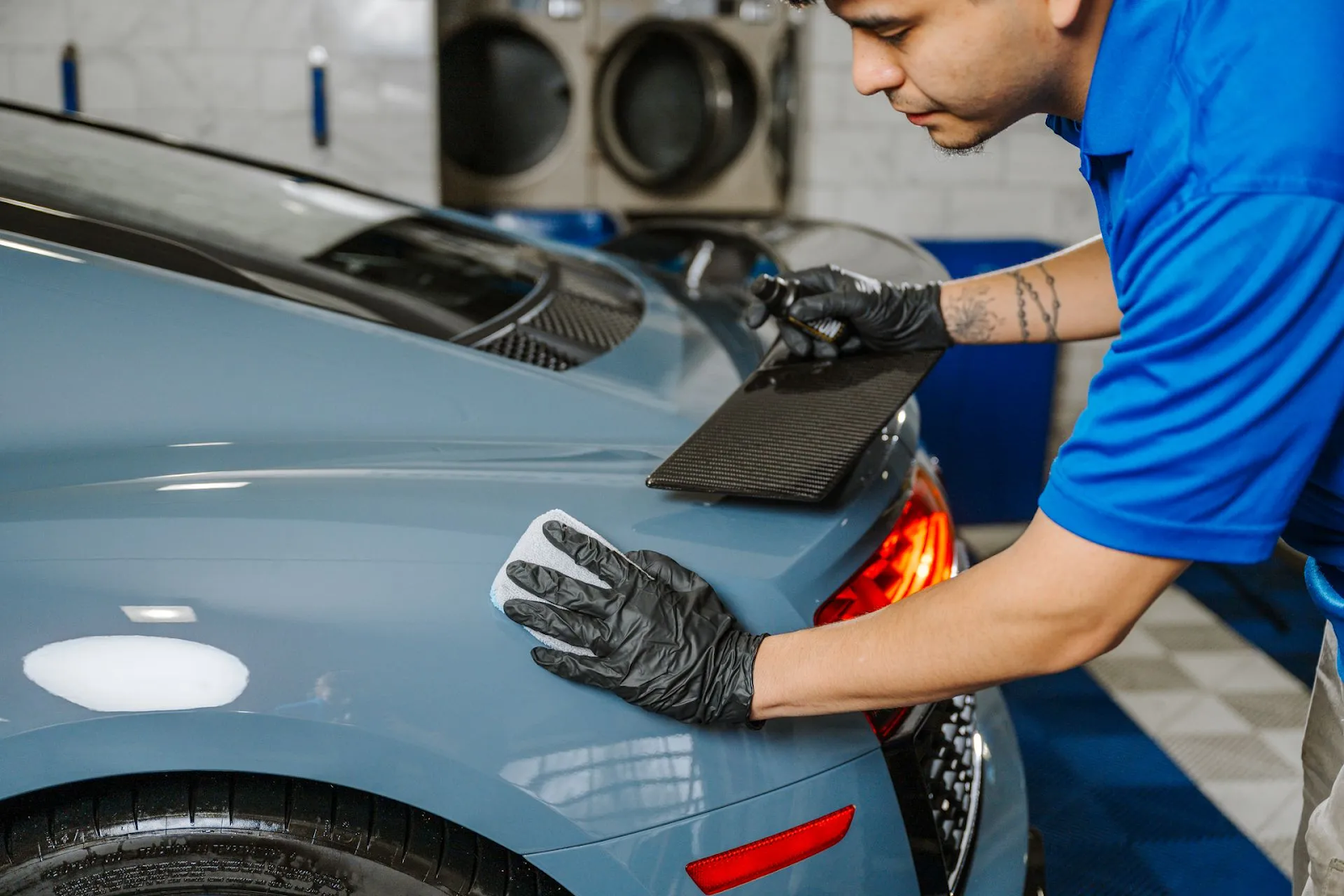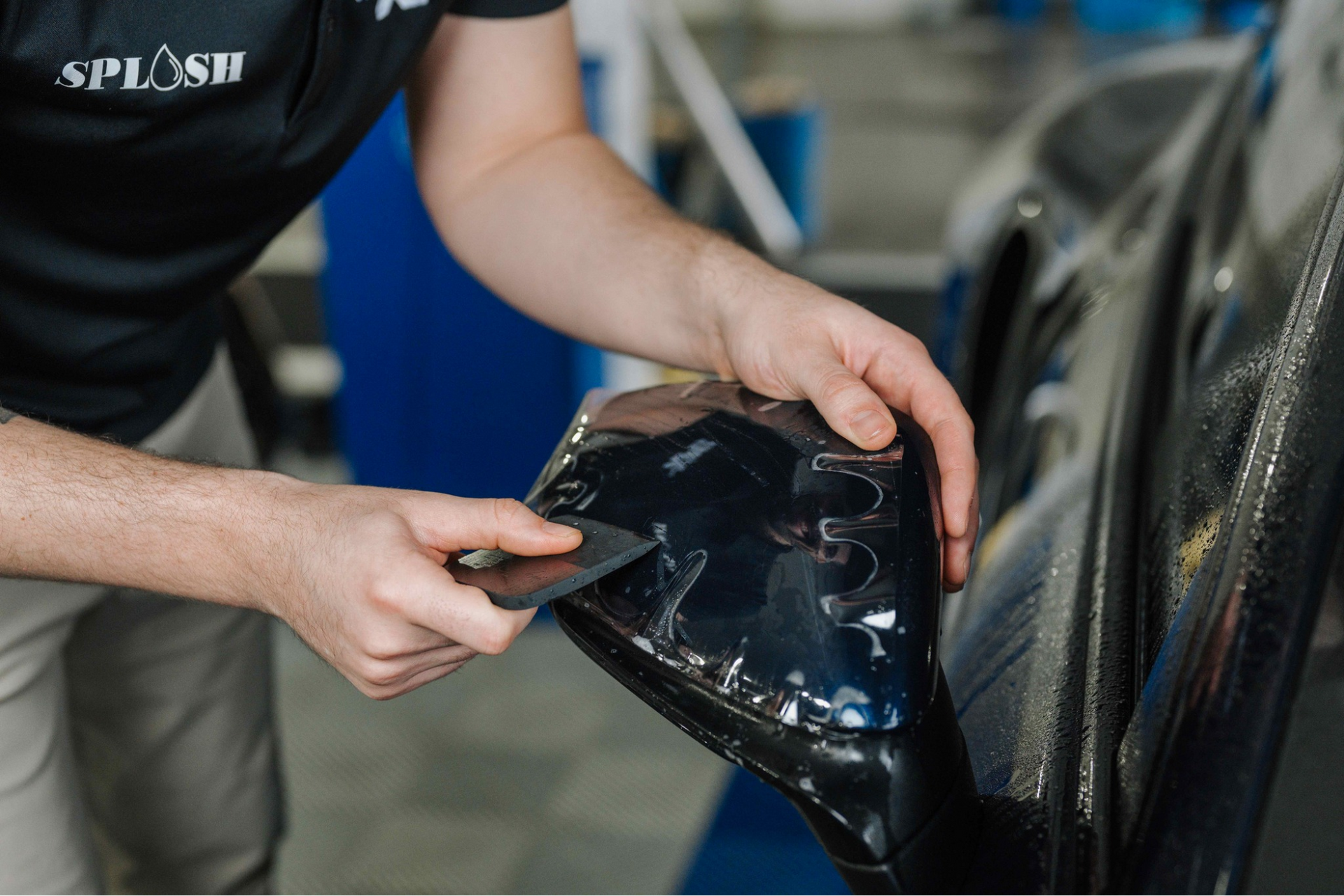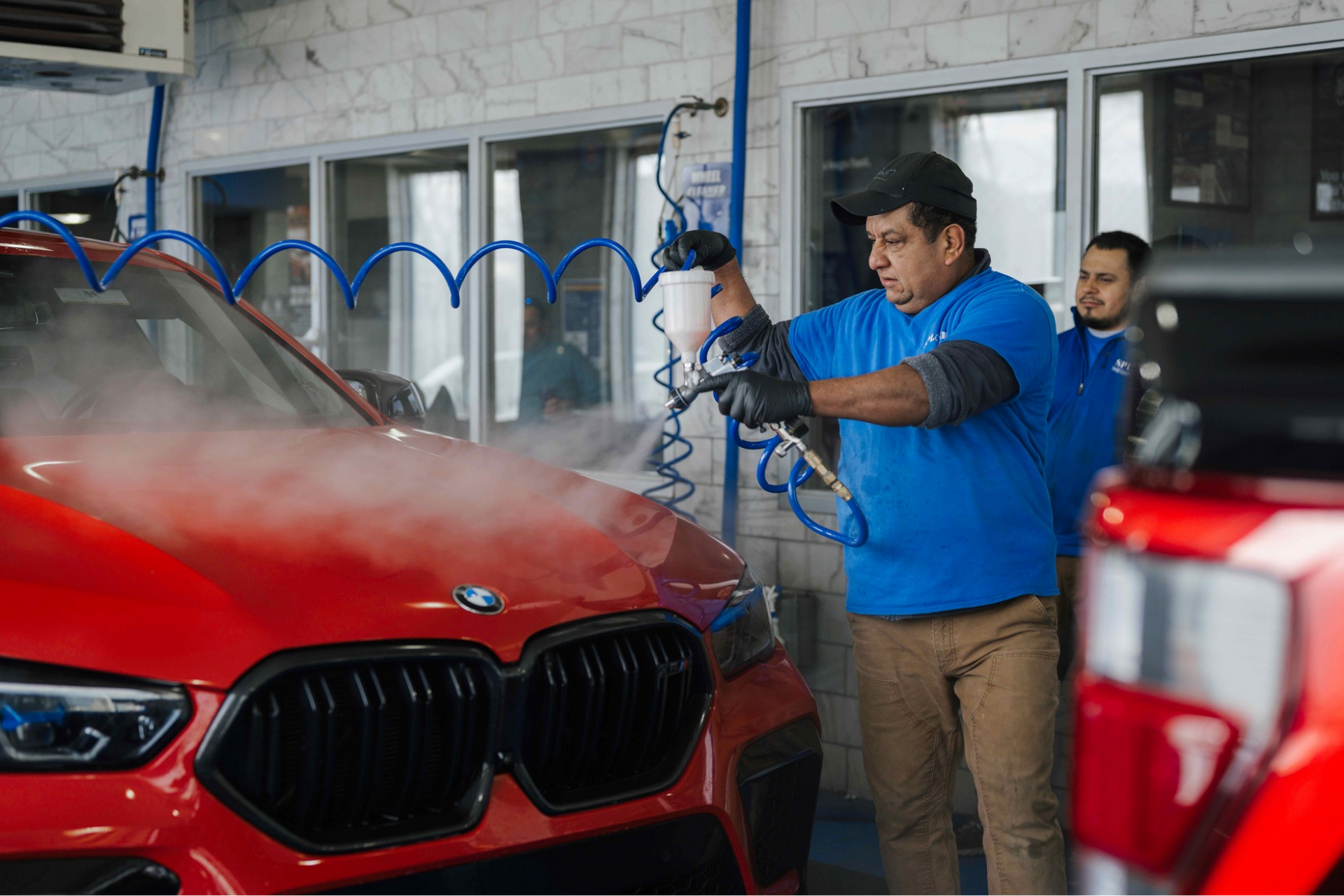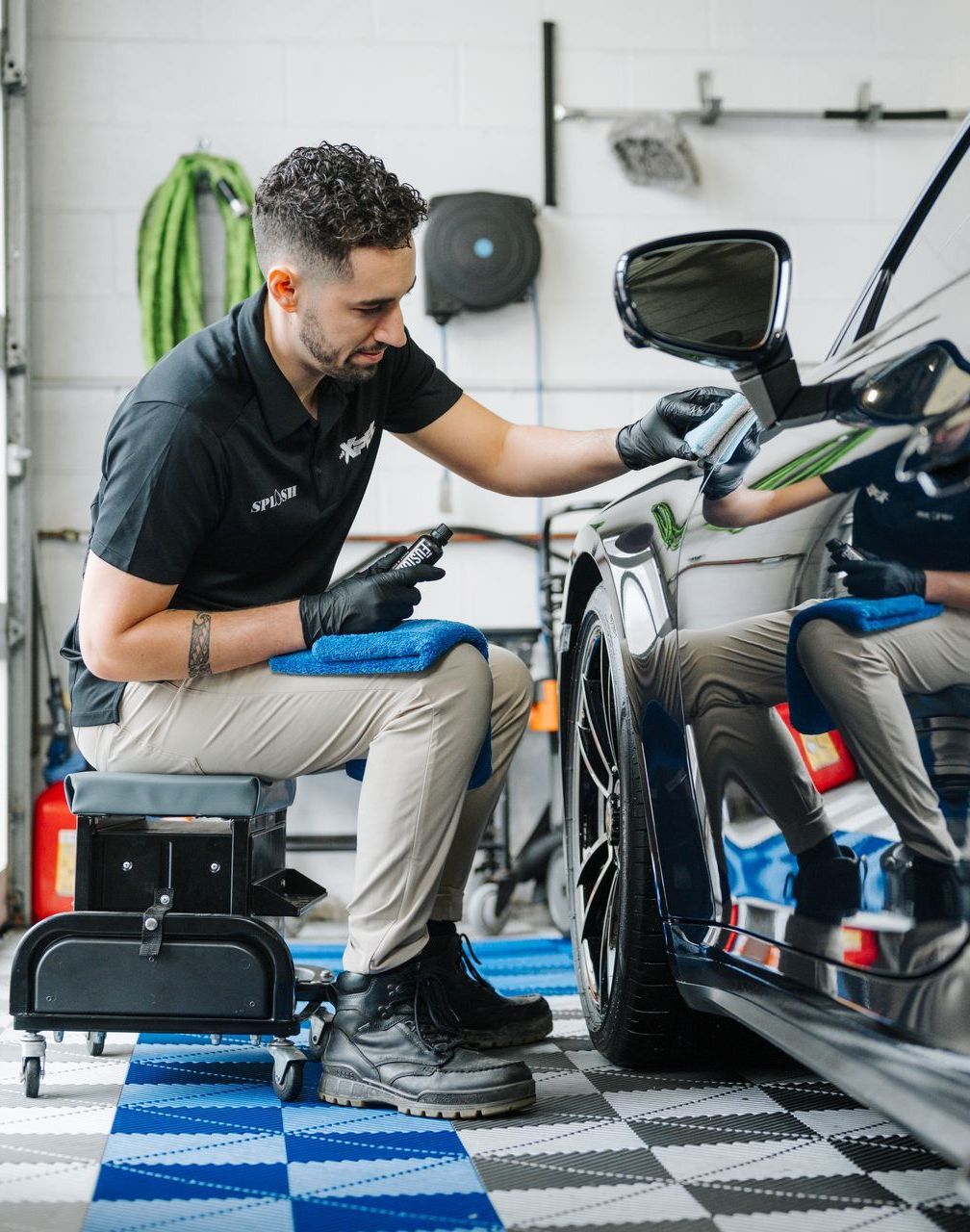You've invested in paint protection film to keep your car looking perfect, but now you're wondering about the best car wash routine with PPF to maintain both your investment and your vehicle's appearance. PPF changes the game when it comes to washing—mostly in good ways, but with some important considerations.
The good news is that PPF actually makes washing easier and safer in many ways. The film creates a barrier that protects your paint while being more forgiving during the washing process. However, you still need to follow proper techniques to maintain the film's integrity and appearance.
At Splash Hand Car Wash and Detail, we've perfected washing routines specifically for PPF-protected vehicles. Our experience with hundreds ofpaint protection film installations has taught us exactly what works best for maintaining these protective systems.
Pre-Wash Preparation
Your car wash routine with PPF should always start with proper preparation. This step is crucial for preventing damage and achieving the best results.
Initial Rinse
Start with a thorough rinse to remove loose dirt, dust, and debris. Use moderate water pressure—enough to dislodge surface contamination but not so aggressive that it could lift film edges or force water underneath the PPF.
Pay special attention to areas where dirt accumulates, like wheel wells, lower door panels, and behind mirrors. The initial rinse removes the bulk of contamination that could otherwise scratch the film during washing.
Contamination Assessment
Before touching the vehicle with any washing tools, assess the level of contamination. Heavy dirt, road salt, or tar might require special treatment or additional pre-cleaning steps.
Look for any film edges that might have lifted slightly. While quality PPF installation should prevent this, catching edge lifting early prevents water intrusion and potential film failure.
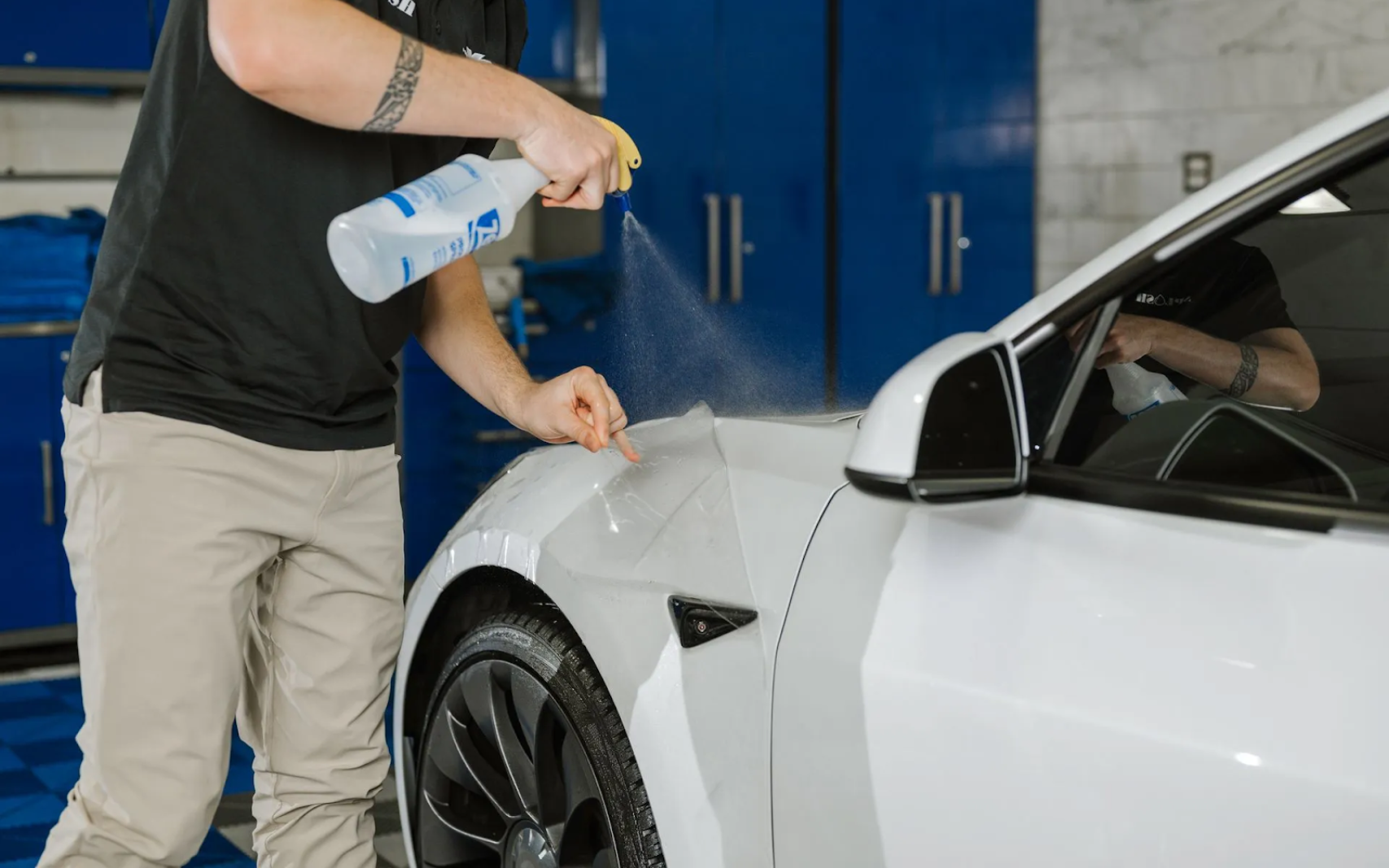
Safe Washing Products for PPF
Choosing the right products for your car wash routine with PPF protects both the film and your underlying paint. Not all car care products are PPF-friendly.
pH-Neutral Soaps
Use only pH-neutral car washing soaps designed for automotive use. Harsh detergents, dish soaps, or alkaline cleaners can degrade the film's adhesive properties or cause discoloration over time.
Quality automotive shampoos provide excellent cleaning power while being gentle on PPF. These products also rinse cleanly without leaving residues that could affect the film's appearance.
Avoid Aggressive Chemicals
Never use solvent-based cleaners, petroleum distillates, or harsh degreasers on PPF-protected areas. These chemicals can cause the film to cloud, discolor, or lose adhesion.
Bug and tar removers specifically designed for PPF are available if needed, but test any product on an inconspicuous area first.
Step-by-Step Washing Process
Follow this proven car wash routine with PPF for optimal results and film protection.
Two-Bucket Method
Set up two buckets—one with soapy water and one with clean rinse water. This prevents cross-contamination that could scratch the film surface.
Use high-quality microfiber wash mitts rather than traditional sponges or terry cloth. Microfiber traps dirt particles instead of dragging them across the film surface.
Top-Down Approach
Always wash from the top of the vehicle downward. This prevents dirty water from contaminating already-cleaned areas and reduces the risk of scratching the film.
Work in small sections, frequently rinsing your wash mitt in the clean water bucket before reloading with soap. This technique maintains lubrication and prevents dirt accumulation in your washing tool.
Gentle Contact Pressure
PPF allows for gentler washing pressure than bare paint. Let the soap and lubrication do the work rather than applying excessive pressure. The film's smooth surface releases dirt more easily than unprotected paint.
Pay attention to film seams and edges, using extra care in these areas to prevent water intrusion or edge lifting.
Proper Rinsing Technique
Thorough rinsing is crucial in your car wash routine with PPF. Soap residue left on the film can cause cloudiness or interfere with the film's self-healing properties.
Use moderate water pressure and ensure complete soap removal from all surfaces. Pay particular attention to crevices, seams, and areas where soap could accumulate.
Work methodically from top to bottom, ensuring each section is completely rinsed before moving to the next area.
Drying Methods for PPF
Proper drying prevents water spots while protecting the film surface from potential damage.
Blotting vs. Dragging
Use the blotting method rather than dragging towels across the PPF surface. High-quality waffle-weave microfiber towels work best for this technique.
Gently press the towel against the surface and lift, allowing the towel's absorbent properties to remove water without creating friction that could scratch the film.
Air Drying Benefits
PPF's hydrophobic properties often allow effective air drying in shade. Water beads naturally roll off the smooth film surface, reducing the need for extensive towel drying.
If air is drying, park in shade and remove any remaining water droplets from horizontal surfaces to prevent spotting.
Maintenance Between Washes
Your car wash routine with PPF extends beyond full washing sessions. Regular maintenance keeps the film in optimal condition.
Quick Detail Sprays
Use PPF-safe detail sprays between washes to remove dust, fingerprints, and light contamination. These products maintain the film's appearance while adding temporary protection.
Spot Cleaning
Address bird droppings, bug splatter, and tree sap promptly. PPF makes removing these contaminants easier, but prompt attention prevents potential staining or etching.

Professional Washing Considerations
While DIY washing is perfectly safe for PPF, professional services offer advantages for busy car owners.
Ourhand car wash packages are specifically designed to work safely with PPF-protected vehicles. Professional technicians understand the unique requirements of film-protected cars.
Professional services also have access to specialized PPF-safe products and equipment that might not be readily available for home use.
Common Mistakes to Avoid
Several common errors can damage PPF during washing. Avoid using automatic car washes with brushes, which can catch film edges or create scratches.
Don't use high-pressure washing directly on film edges or seams. While the film itself can handle pressure washing, edges are vulnerable points that need gentler treatment.
Never use clay bars on PPF without specific PPF-safe formulations. Traditional clay can be too aggressive for film surfaces.
Seasonal Considerations
Adjust your car wash routine with PPF based on seasonal conditions and contamination types.
Winter washing requires extra attention to salt removal and edge protection. Cold temperatures can make film slightly more brittle, requiring even gentler handling.
Summer brings different challenges, such as tree sap, bug splatter, and UV exposure. More frequent washing might be necessary during high-contamination seasons.
Protect Your Investment with Professional PPF Care
A proper car wash routine with PPF protects your investment while maintaining your vehicle's appearance. The key is using gentle techniques, selecting appropriate products, and paying attention to film-specific considerations, such as edges and seams.
PPF actually makes washing easier and safer once you understand the proper approach. The film's protective properties and smooth surface work in your favor, requiring less aggressive cleaning while delivering superior results.
Whether you wash yourself or use professional services, following PPF-specific techniques ensures that your protection film continues to perform optimally for years. The small adjustments to your routine pay off with better appearance and longer film life.
Ready to learn more about maintaining your PPF-protected vehicle?Contact us at Splash Hand Car Wash and Detail to discuss professional washing services designed specifically forpaint protection film-protected vehicles.
Frequently Asked Questions
Can I use regular car wash soap on PPF?
Yes, you can use regular pH-neutral automotive car wash soap on PPF-protected vehicles. Avoid harsh detergents, dish soaps, or alkaline cleaners that could degrade the film. Quality automotive shampoos provide excellent cleaning while being gentle on the protective film.
How often should I wash my car with PPF installed?
PPF-protected cars can typically go longer between washes than unprotected vehicles because dirt doesn't adhere as strongly to the film surface. Most owners find washing every 2-3 weeks sufficient, though this depends on driving conditions and personal preferences.
Is it safe to use a pressure washer on PPF?
Moderate pressure washing is safe for PPF, but avoids directing high pressure directly at film edges or seams. Keep the pressure washer nozzle at least 12 inches away from the surface and use a fan spray pattern rather than a concentrated jet.
What's the best drying method for PPF-protected cars?
The blotting method using high-quality waffle-weave microfiber towels works best for PPF. Gently press the towel against the surface rather than dragging it across the film. PPF's hydrophobic properties also make air drying effective in shaded areas.
Can I take my PPF-protected car through an automatic car wash?
While PPF provides some protection, automatic car washes with brushes can still catch film edges or create scratches. Touchless automatic washes are safer options, but hand washing or professional hand wash services provide the best care for PPF-protected vehicles.

